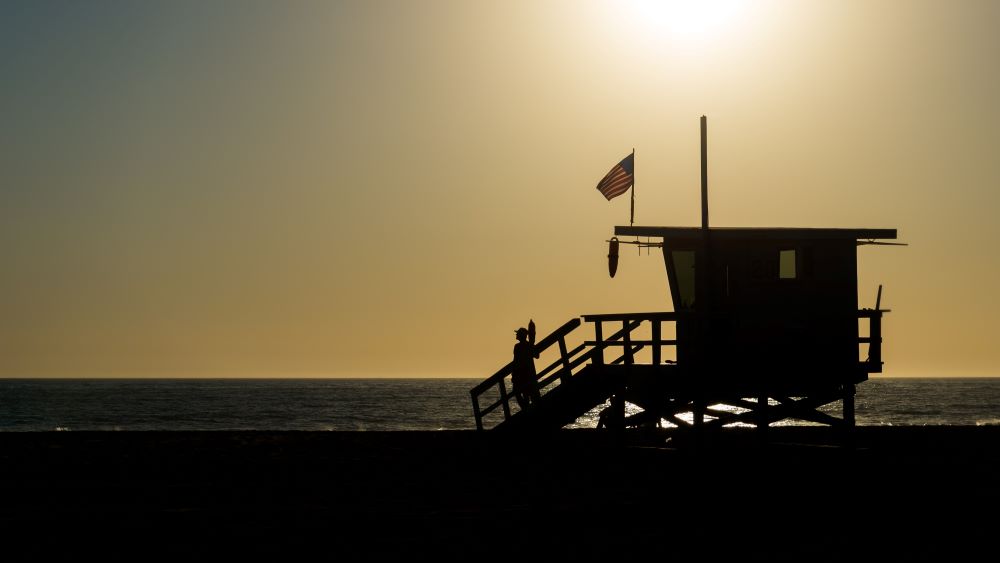Lifeguard shortages plague U.S. cities with high minority populations.
At first glance, lifeguarding may seem like an effortless job. After all, who wouldn’t enjoy lounging in the sun all day? However, a tremendous amount of responsibility comes with being a lifeguard. In fact, the Centers for Disease Control and Prevention (CDC) says that drowning is the leading cause of death for children aged 1 to 4. Among children aged 5 to 14, drowning ranks as the second-most common type of unintentional death, next to motor vehicle accidents.
As summer approaches, people flock to beaches and pools nationwide to beat the heat. Yet, as has been the trend in recent years, numerous municipalities are struggling to recruit an adequate number of lifeguards to ensure swimmers’ safety. When that happens, cities and towns must reduce pool hours and even close some facilities.
While a closed pool on a scorching summer day disappoints everyone, it disproportionately affects low-income families with limited options for affordable summer activities. The situation is particularly dire in Des Moines, Iowa, where as many as 90% of children qualify for either free or reduced-cost lunches. When local authorities make a decision about pool closures or reduced hours, they are aware that swimming has a troubled history of racial inequality and that racial disparities significantly contribute to drowning deaths.

In the United States, drowning death rates for Black individuals are 1.5 times higher than for whites. The disparity becomes even more pronounced in swimming pool drownings, with Black children between the ages of 10 and 14 drowning at a 7.6 times higher rate than their white counterparts, as reported by the CDC.
A 2017 study conducted by the USA Swimming Foundation revealed that two-thirds of Black children possess minimal swimming abilities or cannot even swim. Additionally, 45% of Hispanic and 40% of white children are non-swimmers. That same study also revealed that 79% of children from families earning less than $50,000 annually cannot swim.
As cities and towns grapple with deciding which pools they will open, many strive to ensure access for economically disadvantaged or minority children alongside kids from less diverse or more affluent communities.
In Baltimore, where public pools are free for all residents, officials were careful in their selection of which 12 of the 23 pools they open this year. Nikki Cobbs, chief of aquatics at the Baltimore City Department of Recreation and Parks, explains their approach, “We picked our pools so that it will be equitable and there would be locations on bus lines so that everyone will have access.”
The good news is that experts in the recreation field anticipate fewer pool closures this year compared to previous years.
Kevin Roth, vice president for research, evaluation, and technology at the National Recreation and Park Association, acknowledges the positive changes, saying, “Things are a little bit better than they were. The open times may still be compressed, but we’re not hearing about communities that didn’t open half their pools last year.”
However, the shortage of lifeguard staff continues to strain pool availability. As years have passed, it has become increasingly challenging to find teenagers to fill seasonal lifeguard positions, even though it has historically been teenagers who have traditionally formed the backbone of the lifeguarding workforce.
This change can be attributed, in part, to shifting employment patterns. Pew Research Center’s data analysis from the federal Bureau of Labor Statistics reveals that until 2000, approximately half of all teenagers worked during at least a portion of the summer. By 2010, the teen employment rate had dropped to around 30%.
That is due, in part, to a tight labor market that offers teenagers more lucrative employment opportunities in fast-food, retail, and even office jobs that do not require them a time investment in acquiring CPR, swimming, and rescue certifications.
Now, many municipalities are taking proactive measures to attract lifeguard candidates, including raising lifeguards’ hourly rates, offering bonuses, and covering the costs of certification classes. Some are even reaching out to retirees and unconventional workers to fill their ranks.
Sources:
Chronic Lifeguard Shortage Serves as Springboard to Address Racial Inequities
USA Swimming Foundation Announces 5-10 Percent Increase in Swimming Ability
After dropping in 2020, teen summer employment may be poised to continue its slow comeback


Join the conversation!